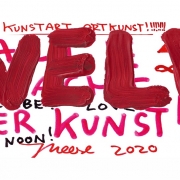Macromedia, oops sorry, Adobe Flash, took its leave from the digital scene at the very beginning of 2021 [1]. And nobody took much notice.
Since the release of the first iPhone in 2007, which couldn’t run websites using Flash, the software development platform began losing its appeal. Flash just never quite managed to join the mobile revolution. It was able to survive for 10 years on some professional interfaces and entertaining websites but was replaced by HTML 5.0 and the almost endless possibilities afforded by style sheets. Flash was like those ageing actors who – you’re surprised to learn – turn out not to be immortal after all [2]. Come to think of it, you hadn’t realised they were still alive anyway…
But its impact is hardly negligible. When it comes to the internet, there is clearly a pre- and a post-Flash. The exciting revolution sparked by Macromedia/Adobe (its creators) became a damp squib amid an online world gleaming with social media.
The Flash revolution
If you weren’t around during the dinosaur years, it might be useful to go over a potted history of the ways that Flash revolutionised the internet user’s experience. The original web – in the 1990s – was all about text. And even though the first HTML standards obviously provided the option of using images, it’s worth remembering – misty-eyed – that the logic of organising content and shapes was originally based more on typewriters rather than the works of the Old Masters, or even television. People wrote, inserted tables, included images to illustrate points and, with a little practice, made it all look slicker with style sheets. Interactivity on the Web 1.0 was about links leading from one page to another, sometimes with rollover animations popping up with the help of a burgeoning program known as JavaScript.

When Macromedia Flash arrived in 1996, and especially when it was developed further from 1999, it opened new horizons in web development. Flash brought content inspired by the world of educational and encyclopaedic CD-ROMs, rather than internet sites. With Flash, people started thinking in terms of screen layout rather than page layout. Graphics ruled supreme, information was visual, and interactivity extended to the development of simple game routines. Flash’s big brother was Macromedia Director [3], an essential software program used in many multimedia studios in the 1990s to show works from of the Louvre Museum [4], depict great battles from history or reveal the mysteries of Machu Picchu.
Flash liberated the internet from the shackles of linear progression. Images could be displayed on a wide screen, shapes were easy to shift, interactivity was the holy grail. Flash made using the internet into a game-changing multimedia experience. All this happened long before YouTube and cartoons were available online, you might even remember the Badgers [5], the Leekspin Song [6] or Viking Kittens [7]. The internet became a playground – Yetisports, a cruel parody of the Winter Olympic Games, has since been redeveloped in other formats [8] (in French).

Flash was groundbreaking for developers too. The internet was no longer restricted to a secret sect of coders and web developers; it began opening up to graphic designers and animators. A whole new caste of digital workers brought a graphic touch to the internet that it would not have had otherwise. It’s difficult to remember, but Flash went some way to turning the internet into a medium in its own right. No mean feat.
Where are the interfaces of yesteryear?
But revolutions don’t last forever. Flash – the emancipator of online narration and interactivity – was powerless in the face of the mighty mobile. Partly because ironically, Flash was slow going; its plug-ins were slow and maddening, but they were worth it! And partly for security reasons. Yes, Flash did have some flaws, and hackers had no qualms in copying how it worked to get into Internet users’ PCs. The other reasons for its failure were political.
Adobe Flash, which published Adobe software, bought Macromedia in 2005, and decided to kill Flash on 31 December 2020. And on 12 January 2021, all the browsers on the market – Chrome, Firefox and Safari in the lead – stopped supporting old versions of the system and doomed an entire chapter in the history of the internet to oblivion [9]. Of course, many development frameworks using a variety of different technologies now allow users to create web interfaces similar to those of yesteryear, as well as even faster, more stable and more standardised interfaces. But the taste for innovation and quirkiness that drove the growth of Adobe seems to have faded from our screens.

Social media have democratised scrolling, making the thumb scan almost the only interface available on mobile screens. From Instagram to Twitter, from Facebook to LinkedIn, we scroll endlessly [10]… and while the story format temporarily shook up editorial lines, it was soon picked up by one platform then another (Instagram, then Facebook, LinkedIn and Twitter, etc. [11]), which meant we were back to scrolling. In the end, stories simply made the vertical movement a horizontal action.
And on computer screens, the dominance of WordPress and other CMS – Shopify, Wix, Drupal [12] – has led to the emergence of standardised graphics interfaces, with best practices in UX and digital performance.
A pessimist would perhaps claim that the latest ‘innovation’ in Web interfaces is the swipe [13], a way of accepting or refusing a contact that was pioneered by Tinder in 2012 – eight years ago already – and has now been replicated on media websites [14] (in French). Other than that, creativity seems to be a thing of the past.
Creativity has left the building
And yet, today’s internet provides creators with an opportunity to develop rich and complex interfaces, which are sometimes the only way of really presenting a subject in all its complexity. These experiments do exist, but they rarely seem to reach the public.

Over the past few years, the New York Times Lab has been developing advanced know-how on innovative interfaces and web documentaries. The most obvious and most popular example is undoubtedly the full analysis published in the summer of 2020 on the explosion in the port of Beirut [15]. On a single page, the American daily used techniques as diverse as video editing, time-lapse and 3D computer graphics to explain the causes and consequences of a major event to its readers. It created a media mix that the Flash developers of the 2000s would have admired. The New York Times is a pioneer in infographic representation and often publishes information on a specific website [16]. It uses photos, videos, and even virtual reality to great effect in what ideally will be one of the prototypes for the online future.

In France, the interfaces designed by L’Atelier, the intelligence and innovation unit at BNP Paribas [17] (in French), are more wonderful examples. In these spaces, form and substance come together to project internet users into a theme and teach them about the virtual economy [18] or the technological challenges of the future [19]. As with the New York Times, the message is perfectly tailored and presented. It undoubtedly testifies to the existence of a genuine cyberculture, an inventiveness and a creativity which draws inspiration from the digital world, cybernetics and science fiction.
These examples show that with Flash a thing of the past, we can still hope for a creative and multimedia-focused internet.
Getting innovation back online
While some people want to paint a picture of a digital future in which virtual reality and voice commands will have replaced computer screens, and – with the impact of lockdown – in which the internet and its various interfaces still play a key role in our lives, maybe it’s time to return some of Flash’s creativity onto our web pages.
Creativity that surprises, draws the eye to further content, contributes something more than endless social media threads and nourishes its audience with information in an alternative way.
Why don’t we bring innovation back online and make the web that bit more exciting?
— Translated from French by Ruth Simpson
This page is available in FR







